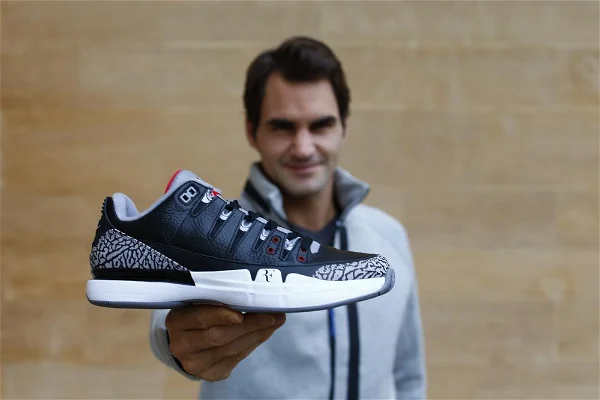On, the Swiss running shoe brand, is facing controversy over the profit margins of its products, particularly the stark difference between the production cost in Vietnam and the sales price in Switzerland. The scrutiny comes in the wake of a study conducted by Swiss consumer magazine K-Tipp, which analyzed customs data for 30 On products, revealing substantial markups. One of the highlighted models, “The Roger Advantage,” created in collaboration with Swiss tennis star Roger Federer, costs On 17.86 Swiss francs ($20.50) to produce in Vietnam but is sold online for 190 francs ($218) in Switzerland.
While high markups are not uncommon in the sports shoe industry, the profit margin reported by On has drawn attention and criticism. K-Tipp noted that On’s profit margin is considerably higher than that of competitors like Adidas and Puma. On, a brand known for its high-performance sports shoes with “run on clouds” soles, was listed on the New York Stock Exchange in 2021 and boasts Federer among its shareholders.
The company, which had a turnover of 1.2 billion Swiss francs in 2022, declined to provide detailed comments on the specific figures but asserted that the information published by K-Tipp contained inaccuracies. In an email response to media inquiries, On stated, “We do not disclose or comment on commercially sensitive or confidential information. However, we would like to point out that the figures published in the media last week contained inaccurate information.”
K-Tipp’s investigation has sparked discussions in Switzerland, where Roger Federer is a prominent sports figure. The study has prompted questions about equitable value distribution and sustainable business practices. Oliver Cassen, spokesperson for the NGO Public Eye, commented on the issue, stating, “Sustainable management consists of equitably sharing the fruits of value creation. If the profit margin of a brand company is so much larger than the margin of shoe factories, then the balance is not good.” Public Eye regularly publishes reports on working conditions in the fashion and clothing industry, emphasizing ethical and social considerations.
On was founded in 2010 by Swiss ironman champion Olivier Bernhard, who collaborated with an engineer from the Swiss Federal Institute of Technology in Zurich to develop a shock absorption system for running shoes. The brand gained popularity for its innovative technology and has since become a significant player in the global sports footwear market.
The controversy surrounding On’s profit margins highlights broader issues in the fashion and sportswear industry, where transparency, fair labor practices, and sustainable business models are increasingly scrutinized by consumers and advocacy groups. Brands are facing growing expectations from consumers who seek not only quality and innovation in products but also ethical and responsible business practices.
In recent years, there has been a broader industry shift toward sustainability, with many brands adopting environmentally friendly practices and addressing concerns related to supply chain transparency and fair labor practices. Consumers are increasingly conscious of the social and environmental impact of their purchasing decisions, prompting brands to integrate sustainability into their core values.
The On controversy comes at a time when the fashion and sportswear industry is navigating a complex landscape of consumer expectations, regulatory scrutiny, and the need to balance profitability with responsible business practices. Brands that can successfully align their operations with ethical and sustainable principles are likely to gain favor with consumers, while those facing controversies may find themselves under increased pressure to address concerns and adapt their practices.
As discussions around On’s profit margins continue, it remains to be seen how the brand will respond and whether this controversy will lead to changes in the industry’s approach to pricing, transparency, and sustainability.
